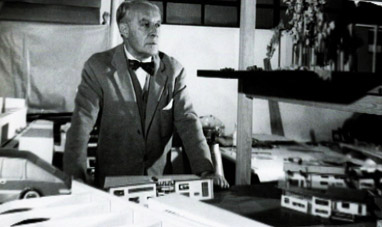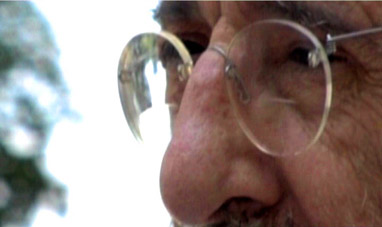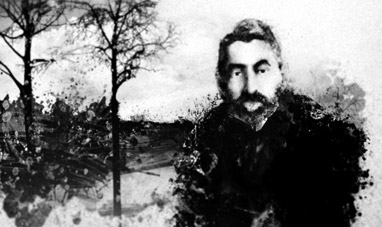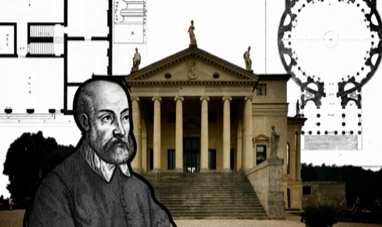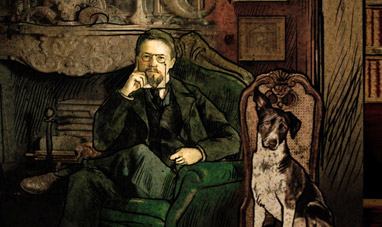Frank Lloyd Wright was an innovative American architect who developed the groundbreaking notion of organic architecture.
He was born on June 8, 1867 in Richland Center, Wisconsin. His Protestant family came from a Welsh background. His father was a musician and minister His mother was a teacher. Wright spent his childhood surrounded by the wonders of nature.
He enrolled at the University of Wisconsin’s Engineering department. He dropped out a year later, though, so he could work as an apprentice with established architects in Chicago.
Wright opened his first studio in 1893. At age 25, he had already developed his own ideas about architecture.
He thought buildings should be like living organisms in which all the parts complement one another.
Wright viewed architecture as an extension of the individual living in harmony with nature and the world.
His vision found fertile ground in the construction of private homes, such as the Prairie Houses near Chicago. Wright designed them close to the ground. Their interiors were divided into several levels, with chimneys and fireplaces that served as focal points. Outside, there were overhanging eaves, while verandas and terraces invited dwellers into spacious yards and gardens.
Wright adhered to the same criteria when he designed Taliesin, his studio home in Spring Green, Wisconsin.
By this time, his reputation had spread abroad. He went to Japan in 1916 to plan Tokyo’s Imperial Hotel. Reinforced concrete supported the building, and it withstood the violent earthquake that struck Tokyo in 1923.
Back in the United States, Wright worked on private homes and offices, such as Saint Mark’s Tower in New York City. However, the plan was decommissioned after the stock market crash of 1929.
In the early 1930s, Wright opened a school for young architects at Taliesin, where the focus was on his own theoretical work.
He created plans for Broadacre City, an ideal community dedicated to human well-being.
Between 1935 and 1939, he built Fallingwater, one of his masterpieces, for the Kaufmann family. Wright situated the house atop waterfalls in Bear Run, Pennsylvania, perfectly integrating it into the surrounding environment. Fallingwater is the most complete example of Wright’s ideal of organic architecture.
He completed the Johnson Wax Building in Racine, Wisconsin in 1944. Life magazine called it a perfect combination of beauty, comfort, and functionality.
Wright’s career culminated in 1959 with the construction of the Guggenheim Museum in New York City. It changed the idea of what a museum could be. A repository of art, the Guggenheim was a work of beauty in its own right. It takes the shape of a tremendous spiral that appears to wrap around itself.
Wright died on April 9, 1959 in Scottsdale, Arizona. He was 92. His thoughts on architecture are vital to this day, and his works remain unrivalled.
He was born on June 8, 1867 in Richland Center, Wisconsin. His Protestant family came from a Welsh background. His father was a musician and minister His mother was a teacher. Wright spent his childhood surrounded by the wonders of nature.
He enrolled at the University of Wisconsin’s Engineering department. He dropped out a year later, though, so he could work as an apprentice with established architects in Chicago.
Wright opened his first studio in 1893. At age 25, he had already developed his own ideas about architecture.
He thought buildings should be like living organisms in which all the parts complement one another.
Wright viewed architecture as an extension of the individual living in harmony with nature and the world.
His vision found fertile ground in the construction of private homes, such as the Prairie Houses near Chicago. Wright designed them close to the ground. Their interiors were divided into several levels, with chimneys and fireplaces that served as focal points. Outside, there were overhanging eaves, while verandas and terraces invited dwellers into spacious yards and gardens.
Wright adhered to the same criteria when he designed Taliesin, his studio home in Spring Green, Wisconsin.
By this time, his reputation had spread abroad. He went to Japan in 1916 to plan Tokyo’s Imperial Hotel. Reinforced concrete supported the building, and it withstood the violent earthquake that struck Tokyo in 1923.
Back in the United States, Wright worked on private homes and offices, such as Saint Mark’s Tower in New York City. However, the plan was decommissioned after the stock market crash of 1929.
In the early 1930s, Wright opened a school for young architects at Taliesin, where the focus was on his own theoretical work.
He created plans for Broadacre City, an ideal community dedicated to human well-being.
Between 1935 and 1939, he built Fallingwater, one of his masterpieces, for the Kaufmann family. Wright situated the house atop waterfalls in Bear Run, Pennsylvania, perfectly integrating it into the surrounding environment. Fallingwater is the most complete example of Wright’s ideal of organic architecture.
He completed the Johnson Wax Building in Racine, Wisconsin in 1944. Life magazine called it a perfect combination of beauty, comfort, and functionality.
Wright’s career culminated in 1959 with the construction of the Guggenheim Museum in New York City. It changed the idea of what a museum could be. A repository of art, the Guggenheim was a work of beauty in its own right. It takes the shape of a tremendous spiral that appears to wrap around itself.
Wright died on April 9, 1959 in Scottsdale, Arizona. He was 92. His thoughts on architecture are vital to this day, and his works remain unrivalled.



